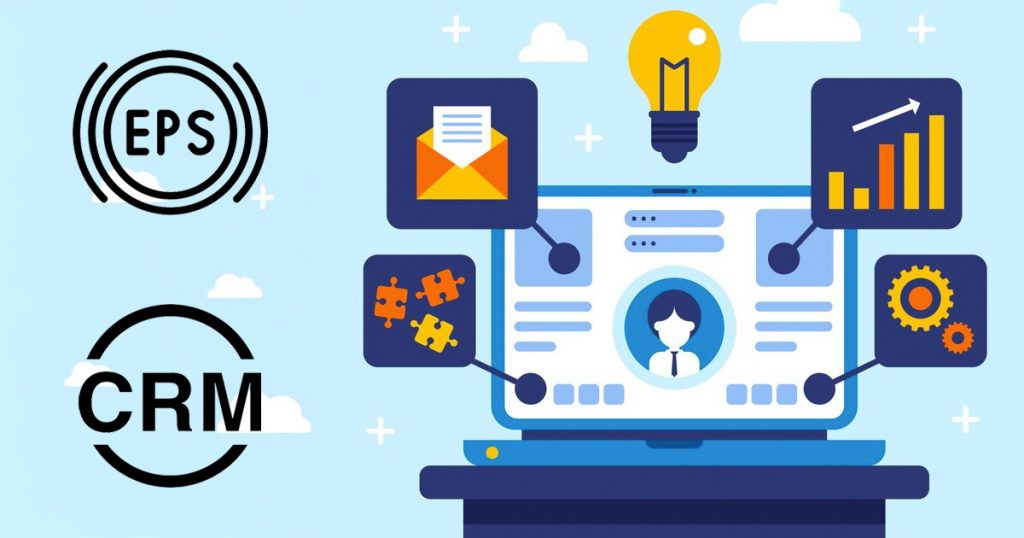In marketing, ESP stands for Email Service Provider. An ESP is a tool that businesses use to send marketing emails to their customers and potential clients. It helps in:
- Managing and organizing email lists
- Designing customizable email templates
- Automating the sending of email campaigns
These functions allow businesses to communicate with their audience effectively, sending personalized messages that can increase engagement and sales.
On the other hand, CRM, or Customer Relationship Management, is a system that helps businesses manage their interactions with customers. It stores customer information, tracks their interactions with the company, and provides insights into customer behavior. This helps businesses understand their customers better, improving customer service and building stronger relationships.
CRM and ESP integration are essential in business marketing management. But why exactly?
Why ESP-CRM Integration is Important for Marketing
ESP-CRM integration is the process of connecting your Email Service Provider (ESP) with your Customer Relationship Management (CRM) system. This integration helps these two systems work together to enhance marketing efforts and improve customer interactions.
Why is this integration important? Here are some detailed reasons and benefits:
1. Comprehensive Customer Profiles
By linking your ESP and CRM, you create a complete view of each customer. This includes past interactions, purchase history, and email engagement, allowing you to understand your customers better.
2. Targeted and Personalized Emails
With integrated data, you can send emails that are highly relevant to each customer. This means using their purchase history and preferences to craft messages that resonate, increasing the likelihood of engagement.
3. Automated Campaigns Based on Behavior
Integration allows you to set up automated email campaigns triggered by specific actions, such as a recent purchase or a customer’s birthday, ensuring timely and relevant communication.
4. Streamlined Data Management
You can reduce errors and save time by doing away with manual data entry when your systems are integrated. This makes it easier to manage customer data efficiently across platforms.
5. Enhanced Customer Engagement
You can interact with clients more successfully and build stronger bonds and loyalty by delivering the appropriate message at the appropriate moment.
6. Informed Marketing Strategies
With access to detailed insights from both systems, you can make better strategic decisions, optimizing your marketing efforts based on real data.
Consequences of Poor ESP-CRM Integration
When ESP and CRM systems are not properly integrated, businesses can encounter several specific problems that hamper their marketing and customer service efforts:
1. Incomplete Customer Information
Without integration, customer data from emails and sales interactions remains separate. This leads to a lack of a full picture of each customer, making it hard to tailor marketing efforts effectively.
2. Generic Marketing Campaigns
When systems are disconnected, marketing teams can’t access complete customer insights, resulting in broad, less personalized campaigns that fail to engage effectively.
3. Time-Consuming Manual Processes
Without integration, transferring data between systems involves manual entry, which is not only slow but also increases the risk of errors, diverting valuable time away from strategic tasks.
4. Inconsistent Messaging
Disconnected systems can lead to messages that are not coordinated, creating confusion or dissatisfaction among customers who receive mixed signals.
5. Limited Insight for Decision Making
Disjointed data makes it challenging for businesses to analyze customer behavior comprehensively, which can lead to misguided strategic decisions.
Essential Features for Effective ESP-CRM Integration
To get the most out of linking your Email Service Provider (ESP) with your Customer Relationship Management (CRM) system, it’s vital to focus on features that ensure everything runs smoothly and your data is well-utilized. Here’s what you should look for:
Real-Time Data Synchronization
This means any changes to customer details, like a new email address or a recent order, are instantly updated in both systems. For example, if a customer updates their email, real-time sync makes sure your emails reach their new address without delay.
Comprehensive Data Exchange
Your integration should share detailed data like customer interactions and purchase history between the ESP and CRM. For example, if a customer often clicks on email promotions but doesn’t buy, this info can help create a special offer just for them.
Automation of Marketing Processes
Automating tasks such as sending thank-you emails after a purchase or reminders for inactive customers helps save time and enhances service. For example, automatically sending a birthday email with a discount can boost customer loyalty.
Advanced Segmentation Features
This allows you to group customers based on criteria like location or buying habits. For instance, customers who open emails but don’t buy could receive more attractive deals to encourage them to purchase.
Intuitive User Interface
A user-friendly interface makes it easy for your team to manage the integration without needing a lot of technical know-how. Features like a simple drag-and-drop tool for creating campaigns can boost productivity.
Detailed Reporting and Analytics
Look for integrations that provide insights into how customers interact with your emails and what works best. For example, if you notice fewer people are opening your emails, it might be time to rethink your subject lines.
Finding the Best ESP-CRM Integration for Your Business
Picking the right software to connect your Email Service Provider (ESP) with your Customer Relationship Management (CRM) system is vital for your business’s success. It’s not just about technology—it’s about choosing a tool that fits your business goals and needs. The right integration can boost your marketing efforts and make your operations smoother, leading to better productivity and happier customers.
With the right software, you can automate everyday tasks, tailor customer interactions, and make smart decisions based on data. However, choosing poorly could disrupt your operations and cause missed opportunities. So, it’s important to carefully check your choices, looking at features, how they can grow with your business, and how they work with what you already have.

